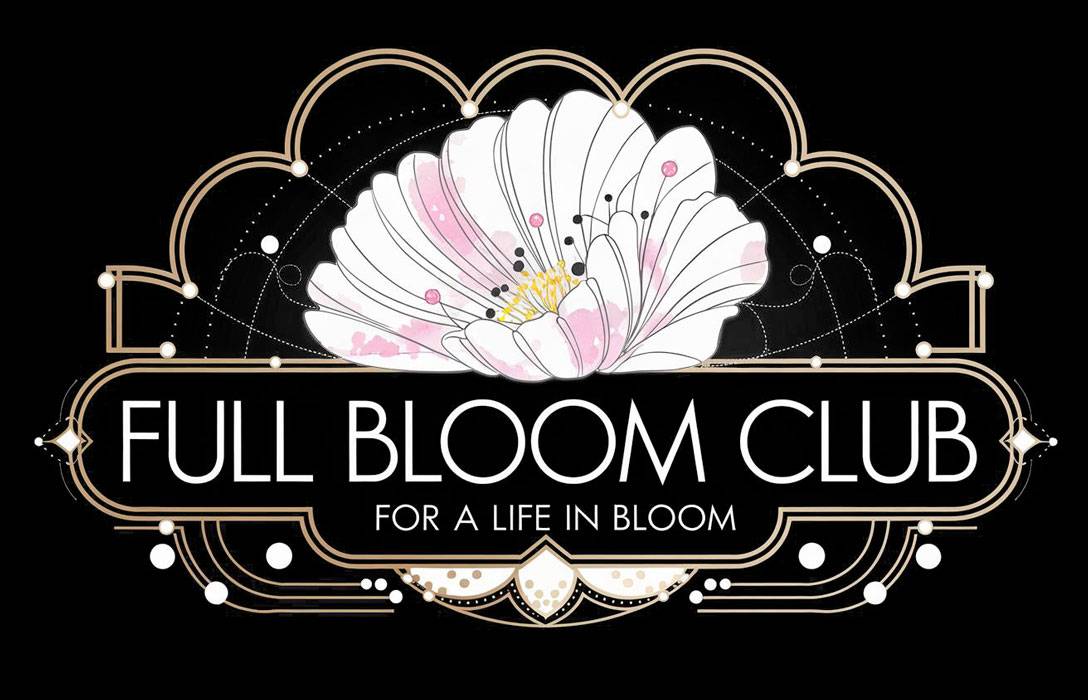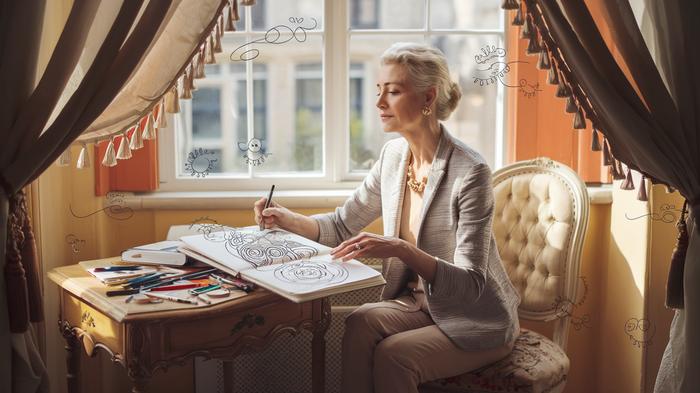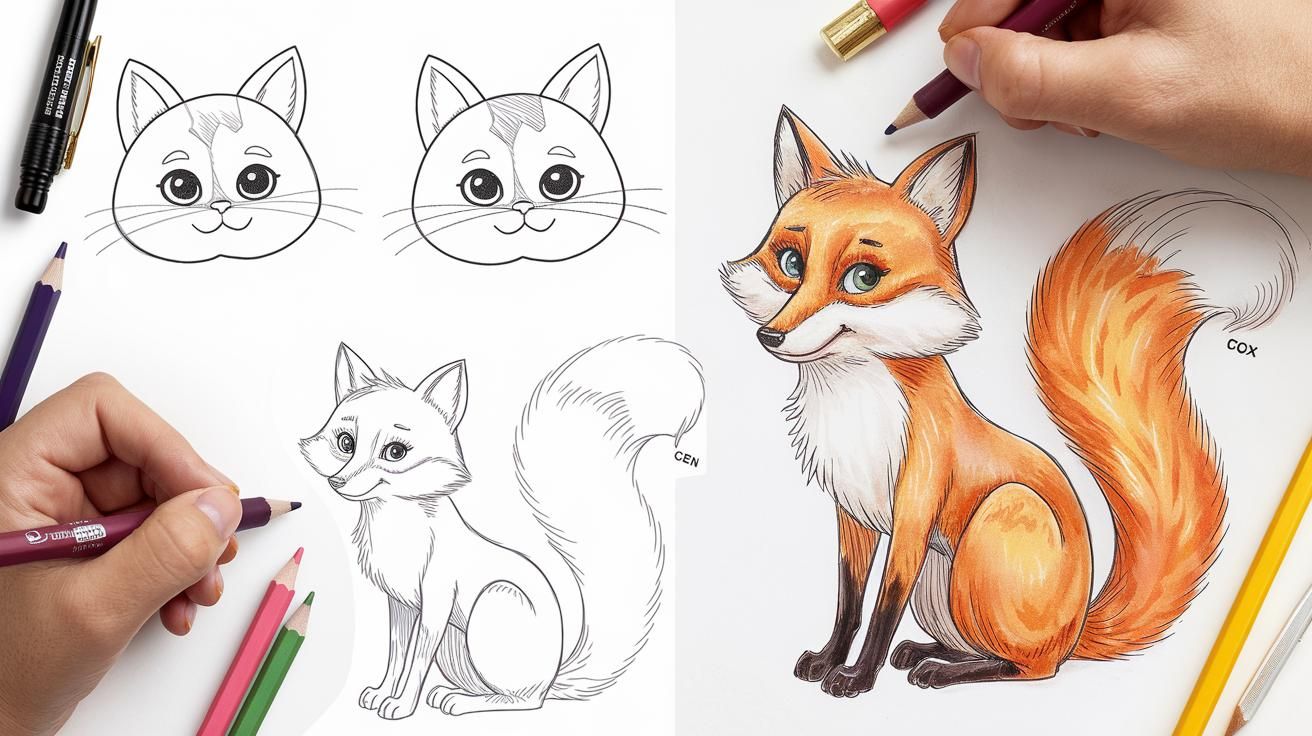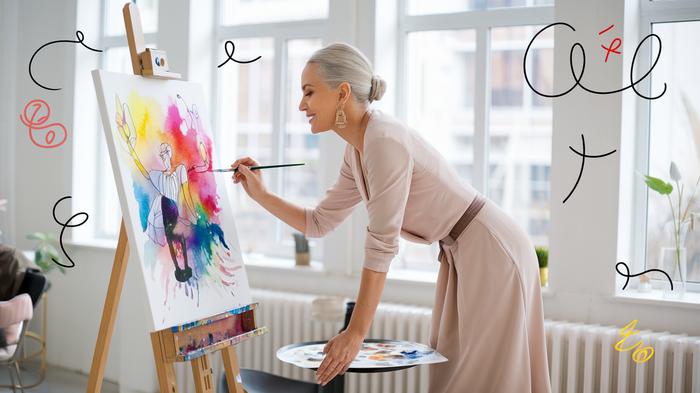The 3-Minute Pencil Drawing Trick That Unlocks Hidden Talent
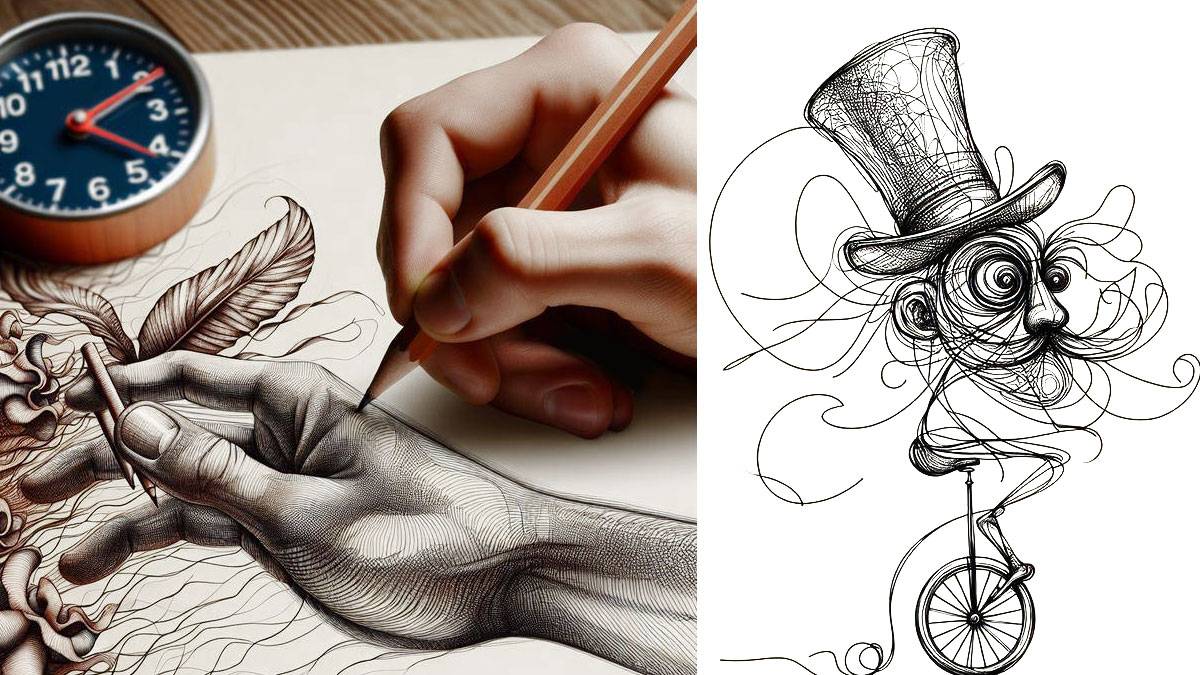
I’ve always been a bit of a doodler. You know, the type who absentmindedly scribbles in margins during long phone calls or decorates sticky notes with swirls and squiggles. But ask me to draw something intentionally? That’s when the panic sets in. My stick figures look like they’ve been through a blender, and my attempts at landscapes resemble abstract modern art – and not in a good way.
So when I stumbled upon this so-called “3-minute pencil drawing trick” that promised to unlock hidden artistic talent, I was skeptical. Very skeptical. But also intrigued. Could it really be that simple? Could I, the person who once drew a horse that looked more like a mutant giraffe, actually create something recognizable in just three minutes?
Well, art adventurers, buckle up (metaphorically, of course – we’re not going anywhere, except maybe on a journey of self-discovery). I’m about to take you on a wild ride through the world of rapid sketching, complete with hilarious mishaps, unexpected triumphs, and a whole lot of graphite-stained fingers.
The Great Pencil Predicament
Before we dive into the actual technique, let me paint you a picture (with words, because let’s face it, my actual painting skills are questionable at best). Picture this: me, surrounded by an array of pencils, from 9H to 9B, utterly bewildered. Who knew there were so many types of pencils? I felt like I was staring at a cryptic code, each pencil a potential key to unlocking artistic greatness – or, more likely in my case, artistic mediocrity.
Thrilling Fact: The Pencil Puzzle
Did you know that the numbers on pencils refer to their hardness? The higher the number, the harder the lead. ‘H’ stands for hard, ‘B’ for black (or soft), and ‘F’ is right in the middle, standing for fine point. I felt like I’d stumbled upon a secret society of pencil enthusiasts!
After much deliberation (and a brief existential crisis about whether my choice of pencil would determine the entire trajectory of my artistic future), I settled on a trusty HB. Middle of the road, just like my artistic abilities.
The 3-Minute Miracle Method
Now, onto the main event: the 3-minute drawing trick itself. The concept is deceptively simple. You set a timer for three minutes and draw whatever comes to mind, without lifting your pencil from the paper. No erasing, no second-guessing, just pure, unadulterated scribbling.
Sounds easy, right? Ha! Let me tell you, those three minutes felt like an eternity. My mind raced. What should I draw? A tree? A face? The half-eaten sandwich on my desk? In a moment of panic, I started with a simple circle. Okay, more of an egg shape. A very lumpy egg shape.
Action Step: Try It Yourself!
- Set a timer for 3 minutes
- Choose any subject (the simpler, the better to start)
- Put your pencil to paper and don’t lift it until the timer goes off
- No erasing allowed – embrace the mess!
As the seconds ticked by, something strange happened. The pressure to create a masterpiece melted away. I found myself adding details I never would have thought of if I’d been meticulously planning each stroke. My lumpy egg morphed into a face, then sprouted a hat, then somehow ended up riding a unicycle. It was bizarre, it was messy, and it was… kind of fun?
The Unexpected Joy of Imperfection
When the timer dinged, I looked down at my creation with a mix of horror and delight. It was, without a doubt, one of the strangest things I’d ever drawn. But here’s the kicker – it had character. It wasn’t perfect, not by a long shot, but it was uniquely mine. And in those three minutes, I’d tapped into a wellspring of creativity I didn’t know I possessed.
Thrilling Fact: The Brain on Art
Studies have shown that engaging in creative activities like drawing can increase dopamine levels in the brain, leading to improved mood and reduced stress. No wonder I felt a little giddy after my three-minute scribble session!
Encouraged by this small victory, I decided to make it a daily practice. Each day, I’d set aside three minutes for uninterrupted drawing. Some days, I’d end up with abstract scribbles that looked like a toddler had gotten hold of my pencil. Other days, I surprised myself with recognizable shapes and even the occasional “not half bad” sketch.
The Zen of Doodling
As the days went by, I found myself looking forward to my daily drawing sessions. It became a form of meditation, a way to quiet my mind and focus solely on the movement of pencil across paper. I even started experimenting with different subjects and styles.
Want to become a zen doodle pro in 30 days in a fun and easy way? Check out this bestselling resource! and here. These toolkits have been game-changers for me, offering step-by-step guidance and inspiration for those days when my creativity needs a little nudge.
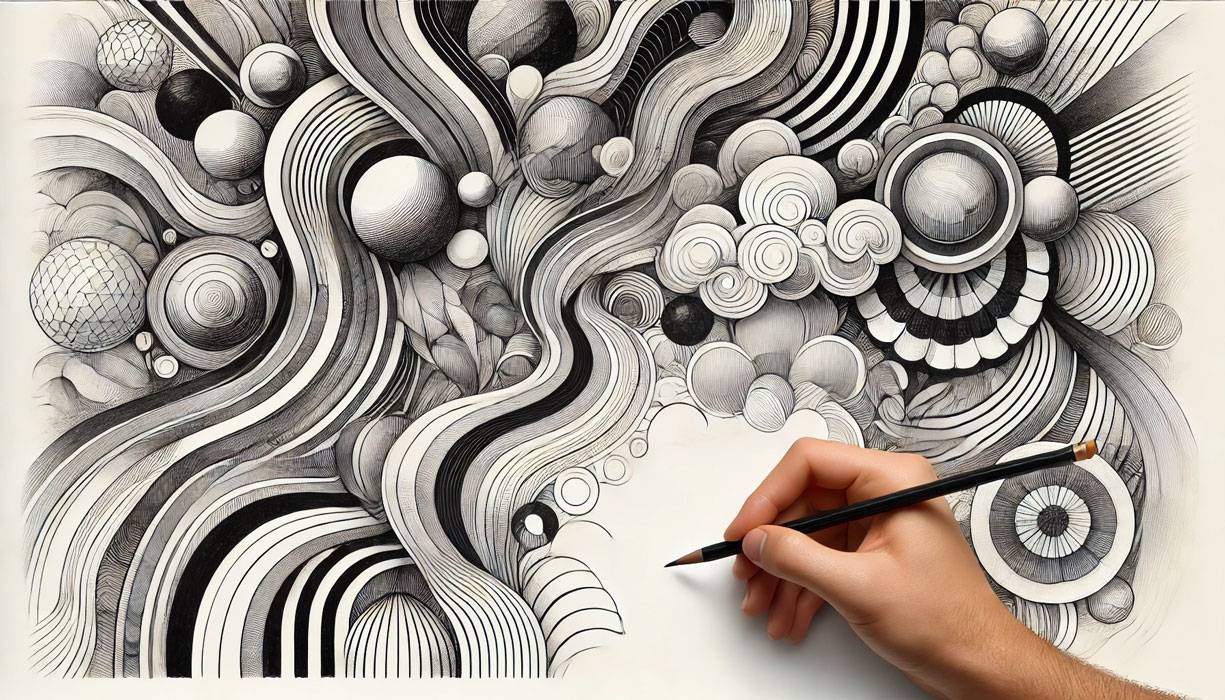
Action Step: Embrace the Zen
- Find a quiet space where you won’t be interrupted
- Take a few deep breaths before you start drawing
- Focus on the sensation of the pencil moving across the paper
- Let go of any expectations – enjoy the process, not the outcome
The Great Pencil Misadventure
Of course, my journey wasn’t without its mishaps. There was the infamous “coffee cup incident,” where I got so engrossed in my 3-minute sketch that I absentmindedly reached for my mug… and dipped my pencil in it instead. Caffeinated graphite, anyone?
Then there was the day I decided to try sketching outdoors. Picture this: me, perched on a park bench, timer set, ready to capture the beauty of nature. And then, a gust of wind. My carefully arranged drawing supplies scattered like leaves, my sketch pad doing a graceful backflip into a nearby puddle. I ended up with a very abstract “wind and water” piece that day.
But each mishap, each imperfect sketch, each moment of frustration when my hand wouldn’t cooperate with my brain’s vision – it all added up to something greater. I was learning, growing, and most importantly, having fun.
The Unexpected Benefits
As I continued my daily drawing practice, I began to notice some unexpected side effects. My observational skills sharpened. I found myself really looking at the world around me, noticing details I’d never paid attention to before. The way light falls on a coffee mug, the intricate patterns in tree bark, the subtle expressions that flit across people’s faces – suddenly, everything was potential drawing material.
Thrilling Fact: Drawing and Memory
Research suggests that drawing can improve memory retention more effectively than writing or reading. It engages multiple senses and neural networks, creating stronger mental connections. No wonder I was starting to remember where I left my keys!
But the benefits weren’t just cognitive. My stress levels dropped. I found myself reaching for my sketchpad instead of my phone during moments of downtime. And perhaps most surprisingly, my problem-solving skills at work improved. There was something about the free-flowing, no-judgment nature of the 3-minute sketches that seemed to unlock new ways of thinking.
The Great Art Supply Adventure
Emboldened by my newfound passion, I decided it was time to expand my artistic horizons. I ventured into the local art supply store, feeling like a kid in a candy shop. Colored pencils! Watercolors! Fancy sketchbooks with paper so smooth it felt like butter!
I may have gone a bit overboard. I left the store with a bag full of supplies and a significantly lighter wallet. But oh, the possibilities! I was ready to take on the art world, armed with my 3-minute technique and enough art supplies to open a small studio.
Action Step: Expand Your Art Arsenal
- Experiment with different types of pencils (graphite, charcoal, colored)
- Try various paper textures to see what you prefer
- Don’t be afraid to mix media – combine pencil with watercolor or ink
- Remember, expensive supplies don’t make the artist – it’s all about practice!
If you’re looking to elevate your artistry, I highly recommend checking out this collection of 100 step-by-step modern drawing worksheets and how-to’s. It’s been an incredible resource for expanding my skills and trying new techniques.
The Family Portrait Fiasco
Feeling confident in my new skills, I decided to tackle a more ambitious project: a family portrait. I gathered my unsuspecting victims – I mean, beloved family members – and announced my intentions. Their reactions ranged from polite enthusiasm to barely concealed horror (I’m looking at you, Uncle Bob).
I set up my “studio” (the kitchen table), arranged my subjects (bribing them with promises of pizza), and set my timer for not three, but fifteen whole minutes. What could go wrong?
Everything, as it turns out. My daughter sneezed halfway through, sending my carefully crafted composition into chaos. The dog, sensing an opportunity for attention, decided this was the perfect moment to showcase his ballet skills. And Uncle Bob… well, let’s just say his “smile” looked more like a grimace of pain.
The result? A chaotic jumble of lines that looked less like a family portrait and more like an abstract representation of a tornado hitting a circus. But you know what? We laughed. Hard. And that sketch, as messy and ridiculous as it is, now holds a place of honor on our fridge. It captures not what we look like, but who we are – a slightly chaotic, always loving family.
The Revelation
As I stood back, admiring my gloriously imperfect family “portrait,” something clicked. This journey wasn’t about becoming the next Picasso. It wasn’t about creating museum-worthy masterpieces or impressing others with photorealistic sketches. It was about reconnecting with that childlike joy of creation, of putting pencil to paper without fear of judgment.
The 3-minute drawing trick had given me something far more valuable than improved artistic skills. It had given me permission to play, to experiment, to make mistakes and laugh at them. It had shown me that creativity isn’t some mystical talent bestowed upon a chosen few – it’s a muscle that grows stronger with use.
Thrilling Fact: The Creative Brain
Neuroscientists have found that engaging in creative activities can actually change the structure of your brain, increasing neural connections and improving cognitive flexibility. So every time you draw, you’re literally rewiring your brain for creativity!
The 5-Day Drawing Challenge
Now, art adventurers, I invite you to join me on this creative journey. I challenge you to try the 3-minute drawing trick for five consecutive days. Here’s how:
Day 1: Self-Portrait Shenanigans
Start with a self-portrait. No mirrors allowed – draw purely from memory and feeling. The results might surprise (and amuse) you!
Day 2: Nature Nurture
Choose an element from nature – a leaf, a cloud, a pebble. Focus on capturing its essence rather than perfect replication.
Day 3: Emotional Landscapes
Draw an abstract representation of an emotion. How would you visualize joy, frustration, or serenity?
Day 4: Object Obsession
Pick a household object and draw it from three different angles. Remember, no erasing!
Day 5: Imagination Unleashed
Let your mind wander freely. Start drawing without any plan and see where your pencil takes you.
For each day’s challenge, remember the rules: 3 minutes, no lifting the pencil, no erasing. And most importantly, no judging! This is about the process, not the product.
The Continuing Adventure
As I write this, my pencil sits beside me, eager for our next 3-minute adventure. My sketchbook is filled with a delightful mess of drawings – some recognizable, some puzzling, all cherished. Each page represents a moment of creativity, a small act of bravery in putting pencil to paper without knowing the outcome.
I’ve discovered that art isn’t about perfection. It’s about expression, exploration, and the simple joy of creation. The 3-minute drawing trick didn’t turn me into a master artist overnight, but it did something even more valuable. It turned me into someone who’s not afraid to try, to make mistakes, to laugh at myself, and to find beauty in imperfection.
Action Step: Share Your Journey
- Document your 5-day challenge with photos of your sketches
- Encourage friends and family to join in – art is more fun when shared!
And for those days when you need a little extra inspiration or guidance, don’t forget to check out these fantastic resources:
- For daily drawing prompts and inspiration, the 365 Drawing Delight Calendar has been a game-changer for me.
- When you’re ready to dive deeper into specific techniques, the Ultimate Botanical Mastery Toolkit offers a wealth of knowledge and practice exercises.
Remember, every sketch, every doodle, every 3-minute masterpiece is a step forward on your artistic journey. Embrace the process, celebrate the imperfections, and most importantly, have fun!
Now, if you’ll excuse me, I have a date with my sketchpad and a very patient cup of coffee (no, not for dipping my pencil in this time). Happy drawing, art adventurers!

